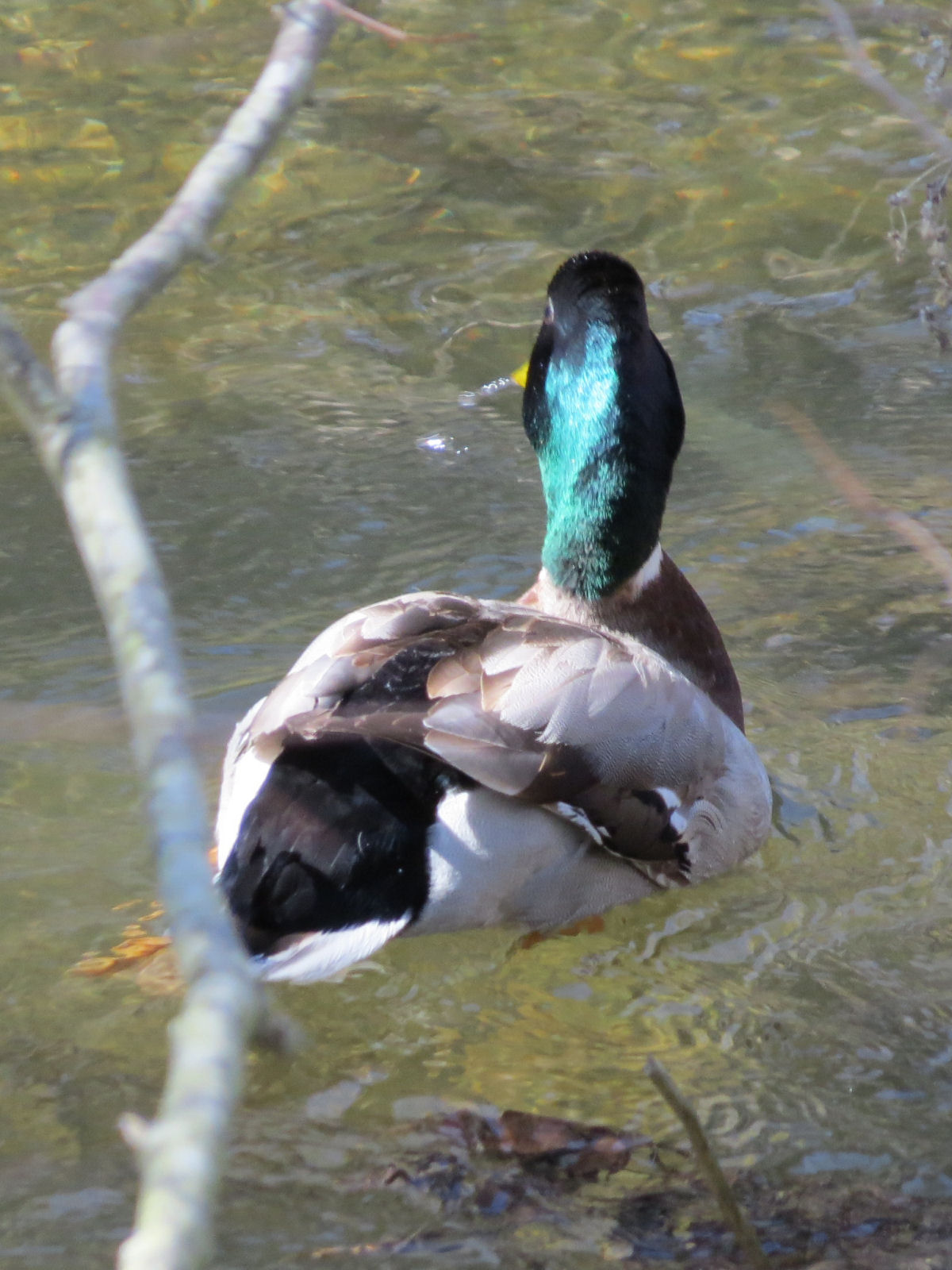
Mallard
Notes and Changes since last report
- It was 60°F, clear and breezy on April 20, 2022.
- The air was much cooler than last week, and the annoying bugs were less annoying.
- New things have been sprouting or blooming almost daily this time of year.
- This week's trail report covers the Wappinger Creek Trail side of the trail system.
The Trails
- Grass was greening at the Gifford House trailhead.
- Tree swallows were in the air or clinging to tree tops in the gusty winds.
- Along the side of the front Old Hayfield, honeysuckle bushes were leafing out. The early leaf out of many invasive plants is more than a head start - it shades out native plants before they have a chance.
- Underfoot were the first dandelions of the season.
- Closer to the edge of the path was purple dead nettle.
- Back up at eye level was the darker green of privet.
- Reaching out for the unwary was multiflora rose.
- At the corner of the field Japanese barberry was getting green and sporting flower buds as well.
- On the other side of the field, an eastern towhee was calling.
- At the head of the Sedge Meadow Trail, ground ivy, or creeping Charlie, was up and flowering.
- Skunk cabbage leaves were unfurling on either side of the Sedge Meadow boardwalk.
- The trail running along the edge of the Sedge Meadow is a favorite for bird watching.
- Violets can usually be found in sunny patches.
- The Sedge Meadow itself was getting green.
- That was largely due to the tussock sedge.
- Out in the back Old Hayfield, burningbush was budding up.
- An exciting find was a cecropia moth cocoon. The spectacular adult moth is the size of your hand.
- After the recent rains, the Wappinger Creek was pretty full today.
- Patches of afternoon sun along the trail down the hill harbored an eastern comma - one of our few butterflies that overwinter as an adult.
- Along the edge, Canada mayflower leaves were unfurling.
- Tufts of Pennsylvania sedge were starting to flower in the background.
- Down at the bottom of the hill, the floodplain was green and yellow.
- Invasive lesser celandine looks similar to our native marsh marigold.
- Farther downstream, several mallards were feeding.
- Once in a while the light was right and a head would turn from black to iridescent green.
- In the lowest part of the path, toothwort was getting ready to bloom.
- Mixed in was cut-leaved toothwort.
- Some times those cut leaves are pretty broad, and then the downy upper stem is a helpful feature.
- Compare with the smooth stems of regular toothwort.
- Just beyond, wood anemone was starting to bloom.
- The young, closed bud is pink, but that changes to white as the blossom opens.
- And that brought us around to a favorite bench at the Appendix.
- Next week: the Cary Pines Trail the side of the trail system.
Sightings
Birds
| Plants
Butterflies
|
